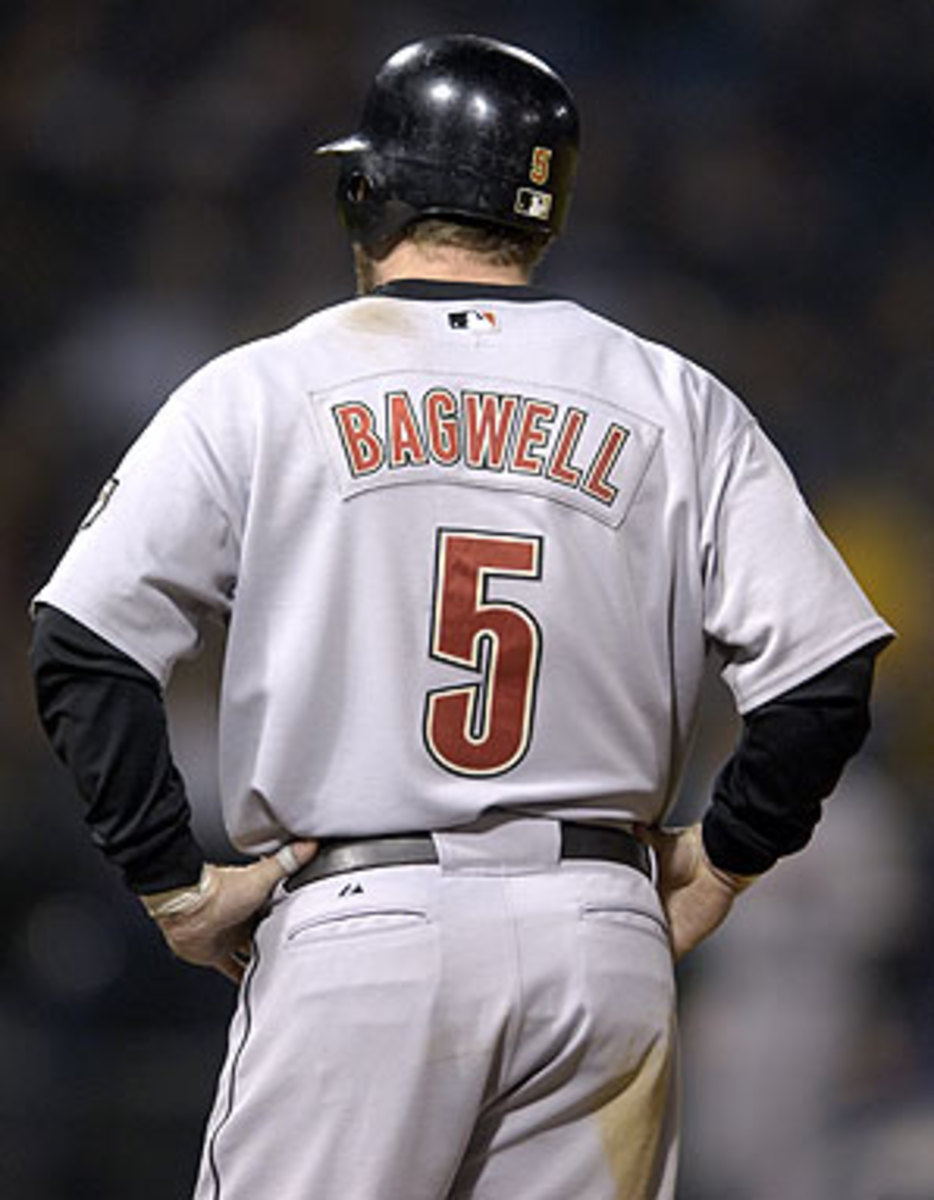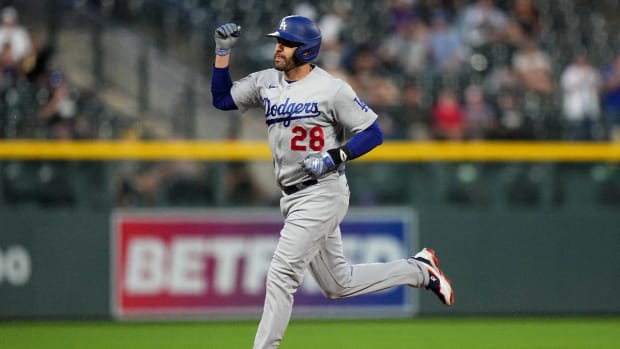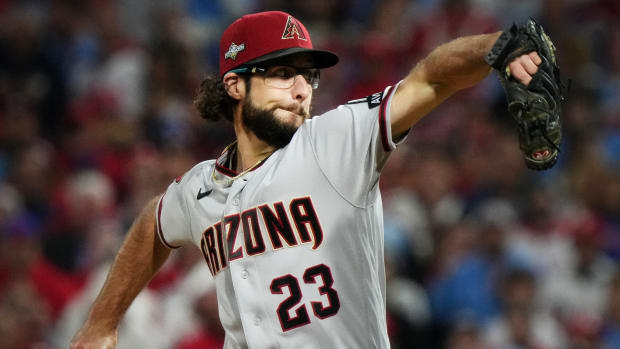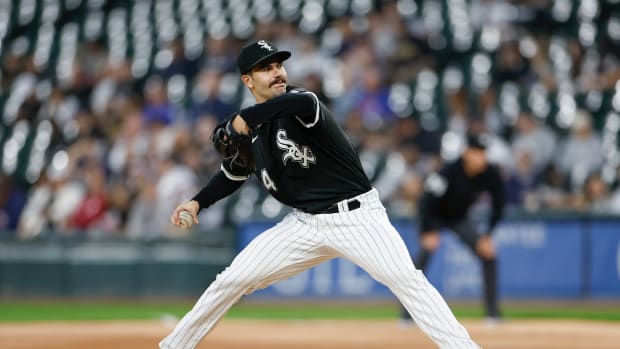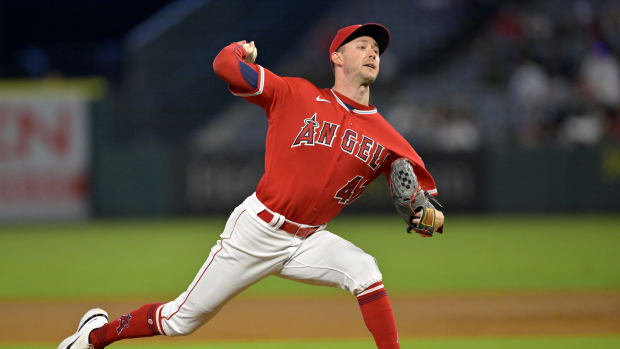Five deadly sins of deadline deals
1. The Failure to Correctly Assess One's Team
With the excitement surrounding deadline deals, it is easy for a general manager to get caught up in the hype and overestimate his team's chances of making the playoffs. The truth is that for one player to make an impact, the race must be very close and the player acquired must perform very well. Thus, it is important that a GM accurately evaluate his team before mortgaging the future on a deadline deal that will turn out not to be enough to make the postseason.
There are many examples every season of prospects who are sent packing in an effort to pull out a playoff berth. Take the 1989 Mets, who on July 31 trailed the Cubs by seven games in the NL East. In an effort to catch Chicago and win their third division title in four years, the Mets traded Kevin Tapani, Rick Aguilera, David West, Tim Drummond and Jack Savage to the Minnesota Twins for reigning AL Cy Young winner Frank Viola. The attempt failed as the Mets never got closer than 1 1/2 games behind. Though Viola won 20 games for New York the next year, it took the Mets until 1999 to make it back to the postseason, while the Twins won the 1991 World Series with Tapani in their rotation and Aguilera as their closer.
The two key statistics to keep in mind in this category are strength of the remaining schedules of the teams in the pennant race and run differential. In the latter case, a team's won lost record will tend to fall in line with their run differential. Teams with small or negative run differentials can be expected to drop in the standings. Run differential was the key in understanding another 1989 trade that, while it didn't come at the deadline, highlighted the danger of failing to correctly evaluate one's team. In that May 25 deal, the Expos sent a package that included a wild, hard-throwing lefty with all of 11 games of major league experience named Randy Johnson to the Angels for Mark Langston. At the time of the deal the Expos were in fourth place in the NL East, three games out and with a .500 record. They also had a negative run differential and weren't really that good. Although they had a brief run in first place after making the trade, they eventually finished an even .500 and their final run totals were 632 for, 630 allowed. Like the Mets, they failed to make the playoffs. Langston left Montreal after the season and by the time Johnson's career ended in 2009, the franchise had long since moved to Washington, D.C. Also like Tapani and Aguilera, Johnson, would go on the win a World Series -- and also five Cy Young awards -- for other teams.
2. A Distrust of Minor League Statistics
For many years there was general distrust of a player's minor league statistics and thus an all-too common belief that a player's value could not be properly assessed until he reached the majors. Today we know that minor league statistics, if properly adjusted for leagues and park, are a reliable indicator of future performance. Still, in a quest to win a pennant, the temptation is great to ignore the minor league numbers and send a great prospect packing in exchange for even a modestly successful major leaguer.
Perhaps the greatest example occurred on Aug. 30, 1990, in a wavier-deadline deal a month after the non-waiver trading deadline. That's when the first-place Red Sox traded 22-year-old prospect Jeff Bagwell to the Astros for 37-year-old journeyman relief pitcher Larry Andersen.
In 1990, Bagwell was playing in the Eastern League, which was known for its big ballparks and tough pitching. Moreover, Bagwell's team, New Britain, played in one of the toughest hitters' parks in the league. Despite all that, Bagwell batted .333/.422/..457 with four home runs and 61 RBIs that season. But a causal look at those numbers, without making adjustment for the league and the home park, caused most baseball people to yawn.
Unfortunately, the Red Sox front office was among those yawning and happily sent Bagwell packing for for a guy who had a 5-2 record and a 1.95 ERA, even though they already had a comfortable 6 1/2 game lead in the AL East. Yes, Andersen pitched well the remainder of the regular season -- posting a 1.23 ERA with one save but no decisions in 15 games -- and the Red Sox won the AL East, but they were swept by the A's in the ALCS. Andersen posted a 6.00 ERA in three ALCS appearances and that offseason he left Boston for the San Diego Padres.
Two months after this trade, the baseball world was surprised to find out that STATS, Inc., in their Baseball Handbook, projected Bagwell to win the NL batting title for the upcoming 1991 season. He didn't, but he did bat .294 while expanding his power, hitting 15 home runs to go with 82 RBIs and winning Rookie of the Year. By 1994, he was the NL MVP, and by the time he retired after the 2005 season he was being talked about as a possible Hall of Famer.
While that may have been difficult to project at the time of the trade, it was at least clear that Bagwell was already very good, and this would have been known if his minor league statistics had been properly adjusted.
That trade brings to mind the question, what is the goal of a deadline deal? Is it to win a World Series championship or is it to win a division title? If the goal is a division title, then perhaps this trade should be viewed as one that helped both teams. However, if the goal of a deadline deal is to win a championship, then this looks very one-sided.
The truth is, if a team needs to add a player in a deadline deal to make the playoffs, then the team is probably not good enough to win a World Series. We saw this recently in 2008 when both the Brewers and the Dodgers made trades in which the players they acquired, CC Sabathia and Many Ramirez, respectively, performed great for the remainder of the season, enabling their new teams to reach the postseason. However, both teams failed to advance to the World Series.
3. Overvaluing a Pitcher's Won/Lost Record
There are several factors out of a pitcher's control that can impact his won/lost record, such as run support, defensive support and relief support. Thus, if a GM puts too much emphasis on a pitcher's won/lost record and not enough on the rest of his statistics, he can get burned.
Here are a couple of examples, which occurred in back-to-back seasons and involved pitchers who went on to have extremely successful careers:
Aug. 12, 1987: The Braves traded Doyle Alexander to the Tigers for John Smoltz.
In two minor league seasons with the Tigers' organization, Smoltz posted a combined 11-18 record. With the eye of the Tigers on a division title in 1987, their management was more than willing to part with their 20-year-old righty. Initially, this trade appeared one-sided in favor of the Tigers as Alexander went 9-0 with a 1.53 ERA the rest of the season and the Tigers came from 1 1/2 back at the time of the deal to overtake the Blue Jays and win the AL East on the season's last weekend. However, they lost to the Twins in the ALCS and didn't make it back to the postseason for 19 more years. By then, Smoltz had helped the Braves win 14 division titles, five pennants and the 1995 World Series while winning a Cy Young award and carving out a Hall of Fame career.
July 29, 1988: The Orioles traded Mike Boddicker to the Red Sox for Curt Schilling and Brady Anderson.
This trade is a similar to the Smoltz deal. Schilling (16-20) had a losing record in the minors in his two seasons prior to the deal. The Red Sox were in third place, 1 1/2 back in the AL East, but thanks in part to Boddicker going 7-3 with a 2.63 ERA, rebounded to win the division by one game. However, they were swept in the ALCS. Boddicker pitched well for Boston for two more years, but Schilling, after being traded twice more, became a borderline Hall of Famer. Of course, the Red Sox eventually reacquired Schilling in a trade after the 2003 season, then won two World Series in the next four years.
4. Team Chemistry/Make-up
In 2005, with the trading deadline approaching, Houston Astros players requested that management refrain from making deals because the Astros players believed that the team make-up and chemistry was in place to win the pennant. Thus, Astros management ceased trade talks and the Astros did, in fact, go on to win their first National League crown. Team chemistry and make-up are important factors, and if a GM is not careful, a trade can derail a championship drive.
Aug. 28, 1983: In a bizarre wavier deal, the Indians traded Len Barker to the Braves for Brett Butler, Brook Jacoby and Rick Behenna, plus $150,000.
Butler was the Braves' leadoff hitter as they battled the Dodgers for the NL West title. The Braves made this deal with the agreement Butler would finish the year in Atlanta. The fact that Butler was in the trade was not to be disclosed until after the season. The secret got out, though, and the ensuing fallout may have contributed to the Braves and their lame duck leadoff man sputtering down the stretch as the Dodgers won the division crown.
July 21, 1995: The Reds traded Deion Sanders, John Roper, Ricky Pickett, Scott Service and Dave McCarty to the Giants for Mark Portugal, Dave Burba and Darren Lewis. In an effort to plug a gap in the Reds' rotation, Reds' GM Jim Bowden traded his leadoff man, Sanders, to fill the fourth and fifth slots in the Reds' rotation. During the remainder of the season, the deal appeared to be a wash. However, when the Reds reached the postseason, they reduced their rotation to a three-man staff. This put Portugal and Burba on the sidelines and eliminated the benefit of the trade. Thus, the postseason net effect was that the Reds were without a leadoff hitter and without a pennant.
5. The Trading of Young Stars
The trading deadline can be a great tool for rebuilding because it enables weak teams to trade their aging stars to acquire future ones. The key word in this sentence is "aging." Even a rebuilding team should hang onto its young superstars, most of whom will be leading contributors on pennant-winning teams at some point. Just take a look at a list of Hall of Fame players. Most of them played in a World Series (unless they were Cubs). Therefore, if a rebuilding team wants to win a championship sometime in the future, its young stars are key.
Let's go with the easy example here:
July 7, 2008 and July 29, 2009: The Cleveland Indians' annual trading of a Cy Young winner, first Sabathia, then Cliff Lee. Championships are not won by trading relatively young Cy Young winners. They are won by keeping them. The good news for Indians fans is that Cleveland will not be trading a Cy Young winner this season. Of course, the bad is that it's because it doesn't have one anymore, and may not for several more years.






























